I had bread on my mind.
The plan was to bike from Kamakura to Totsuka, and then Totsuka to Oiso along the old Tokaido. Oiso is a quaint coastal town of minor historical importance, where Meiji politicians and prime ministers once retreated to summer homes and held banquets to decide the fate of the country. Today, Murakami Haruki famously holds residence. But most importantly: Oiso is home to Lee’s Bread, one of the best bread shops in Shonan.
The ride begins behind Hase’s Big Buddha. You can just about see the top of his curly weathered crown between the trees. In a month the leaves will be gone and it will be plainly visible. But now, in early November, it’s mostly hidden.
Blue skies. Up and out the valley of Hase 5-chome, where old maps seem to indicate a river once ran. Now, concrete. Put an ear to the ground and you might hear a burble. School children in colored caps bounce along the side of the road in hundred-meter-long lines, corralled by watchful teachers.
I head for morning coffee at my beloved POMPON CAKES BLVD., but they’re closed. Assume nothing is on schedule around Kamakura, along the coast, in the Shonan area. Shops open and close willy-nilly, with little regard to official or published timings.
So I think: No problem, I’ll snag a bagel at Bagel Montreal, one of the best bagel shops in the area. Also closed. No dice.
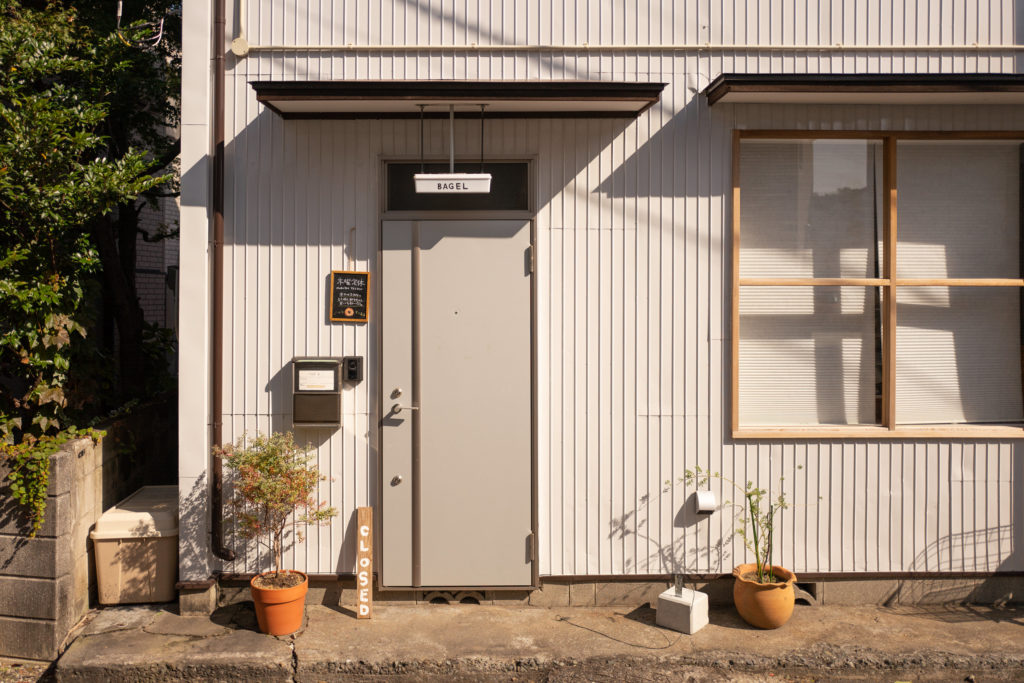
I decide to skip breakfast.
The ride to Totsuka takes you first to Ofuna. On the way to Ofuna you ride beneath the monorail tracks. I’ve never not been delighted by the insanity of the monorail: A hulking, elevated track that appears from seemingly nowhere, and upon that track — gliding just a few meters away from bedroom windows, with a wild rumble, no elegance — carriages trundle like a passing storm. It gives this otherwise nowhere zone of suburbia unexpected personality. Years later, I’m still not convinced a monorail is better or more sensible than a simple train track, but it sure is more fun to watch.
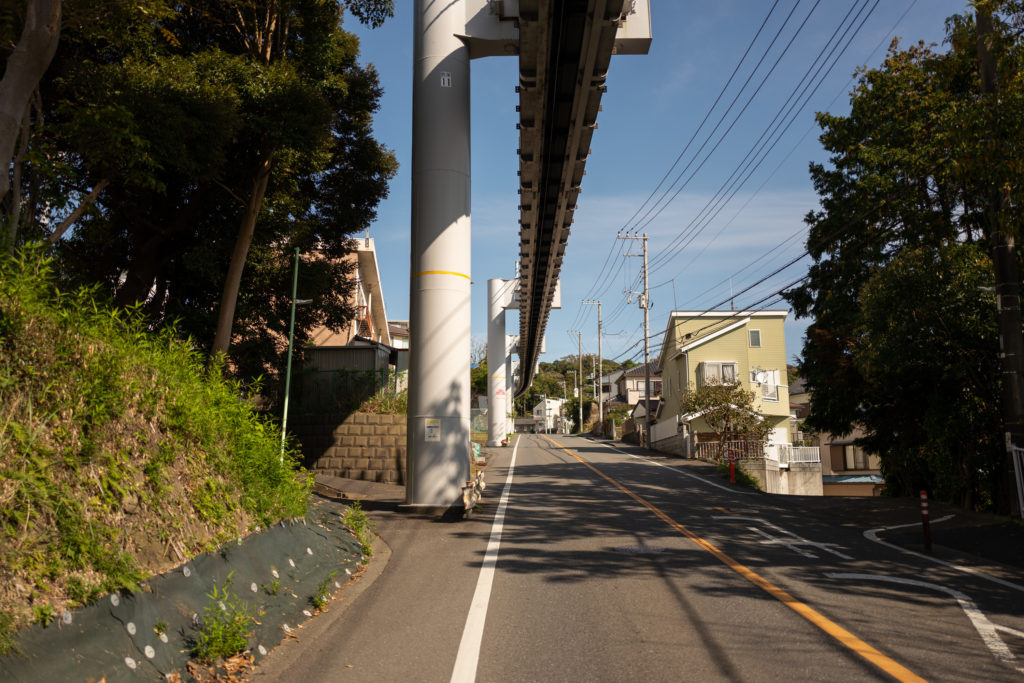
Close to Ofuna, the head of the giant, white, Kannon of Ofuna Kannon-ji appears on a hill through the trees. You can catch a glimpse of it if you sit on the west side of the trains in and out of Kamakura.
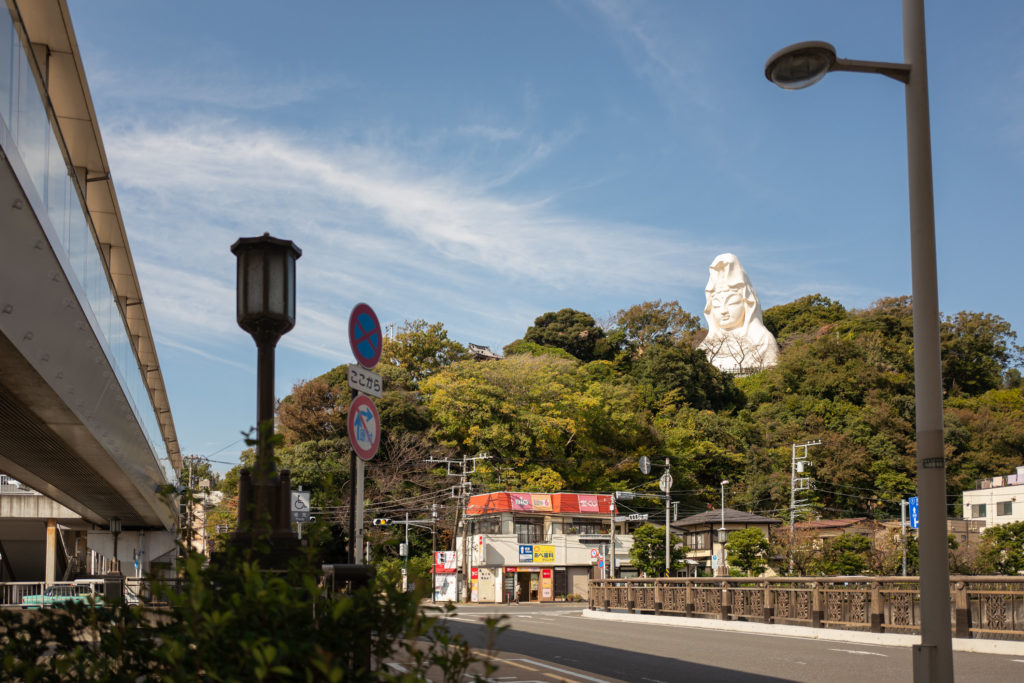
Otherwise, the ride to Totsuka delights with banality: Meandering back streets alongside elementary schools, a tiny bamboo grove, a woman in a smock working a small patch of land, a tiny park at which I once saw two grown men, identical twins, in their 60s, swinging on the swings like children, prefab homes and well-made concrete designer homes — the usual fare. The most surprising thing I run into is the new highway being cleaved through the landscape just before Totsuka. Concrete plinths hold columns that look like the ancient remains of an advanced people. They loom large above still-in-use fields. The columns will soon hold the road, and the road will daily ferry tens of thousands of cars north towards the cities of Yokohama and Kawasaki and beyond.
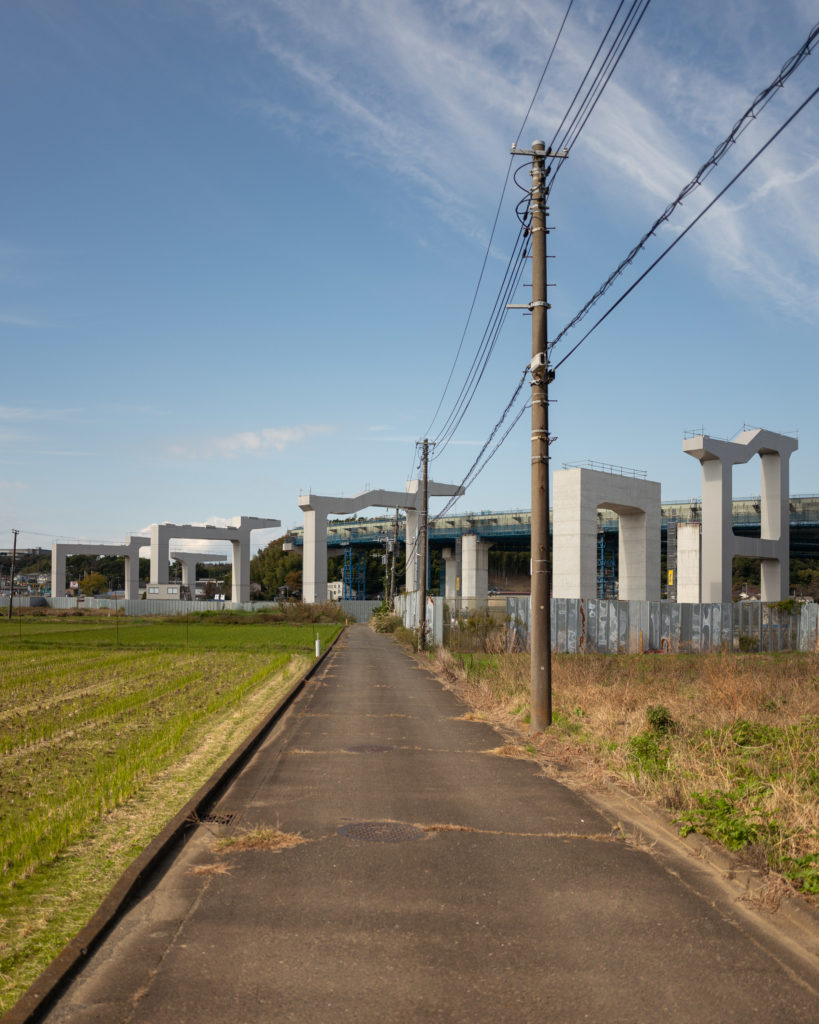
The arrival to Totsuka is without fanfare. The station is neither small nor large nor of any architectural grace. A commuter hub for folks who work in Tokyo but don’t want to pay Tokyo land prices for their parcels. From here, we’re on the Tokaido, one of two main roads connecting old Tokyo (Edo) and Kyoto hundreds of years ago. The other road being the Nakasendo. I’ve walked the entirety of both.
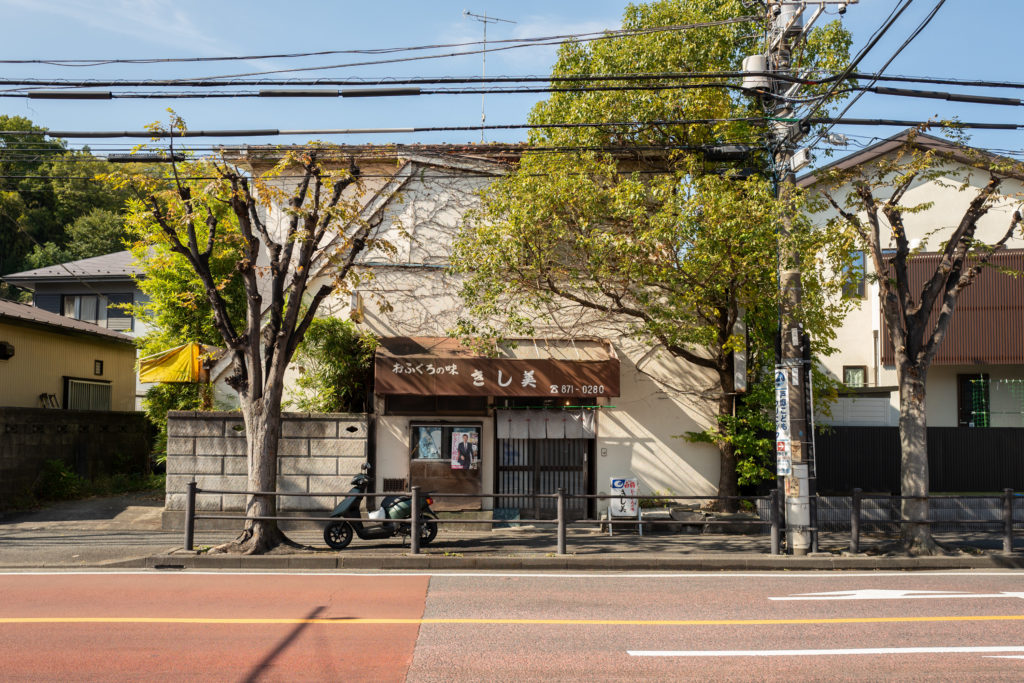
I think back to my Tokaido walk as I now bike it. I walked it precisely one year ago. This stretch between Totsuka and Fujisawa is very much of the “pachinko road” aesthetic — these old roads became new arteries, and these new roads are loaded with chain drug stores and chain ramen shops and pachinko parlors galore. When walking, you contend with this directly, over days. You gaze upon the mesmeric sameness. You take delight in it or are driven mad. On my bike, moving at consistent and smooth twenty kilometers-per-hour, it’s quite pleasant to zoom past this contemporary blight. So many cars. It’s fun to remember: Carts with wheels weren’t allowed on the old roads. Wheels ruin roads. Horses, shoulder-hoisted palanquins, and mainly just feet-upon-dirt moved the whole of the country back and forth four hundred years ago.
Fujisawa was the point where pilgrims could continue west on the Tokaido or south towards Enoshima island and its eponymous shrine. I stop by the historic marker next to Yugyoji Bridge, spanning the Sakai River. Today I bike west, inland, skipping downtown Fujisawa. The old road gets quiet here in a pleasing way. Old bicycle shops and sweet shops line the street. The number of cars fizzles from a torrent to a trickle. Generally, things become more pleasant.
Here and there old pine trees remain, reminding you that this road was once lined with pines — so-called matsunamiki. A simple tree adds so much character to the road, and it’s easy for a heart to break thinking about how much character has been lost in modern times. But similarly: This gap makes the few remaining pines abutting chemical factories and other industrial shops all the more precious.
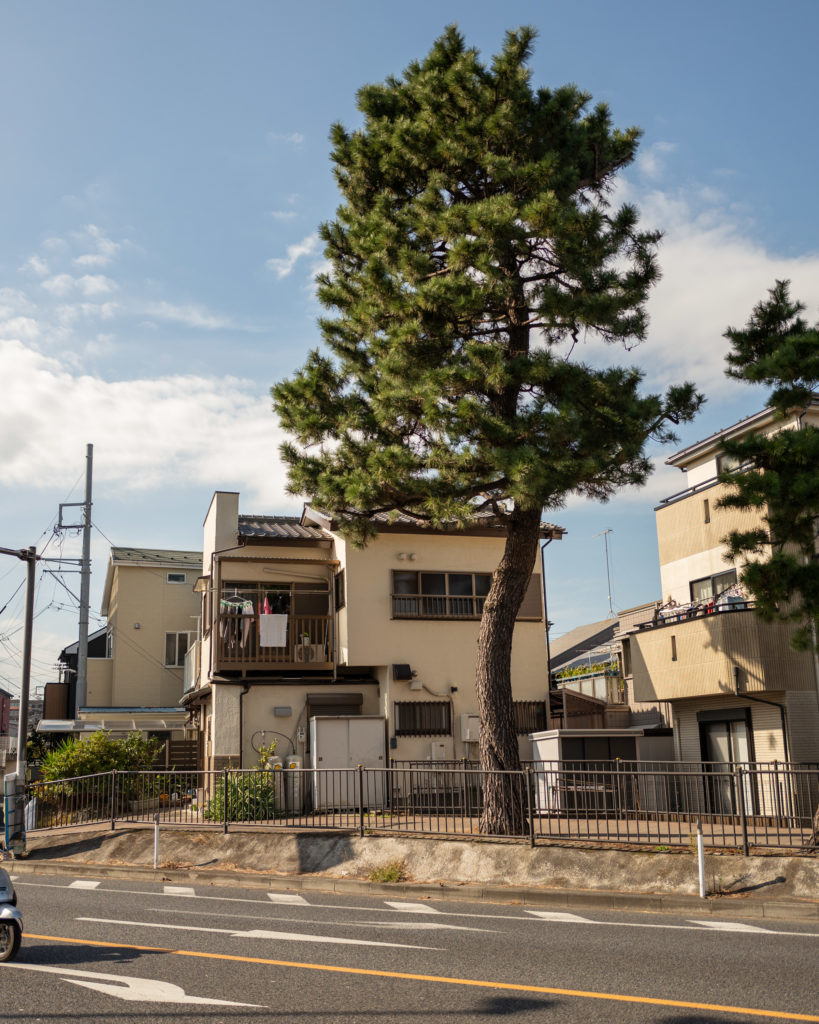
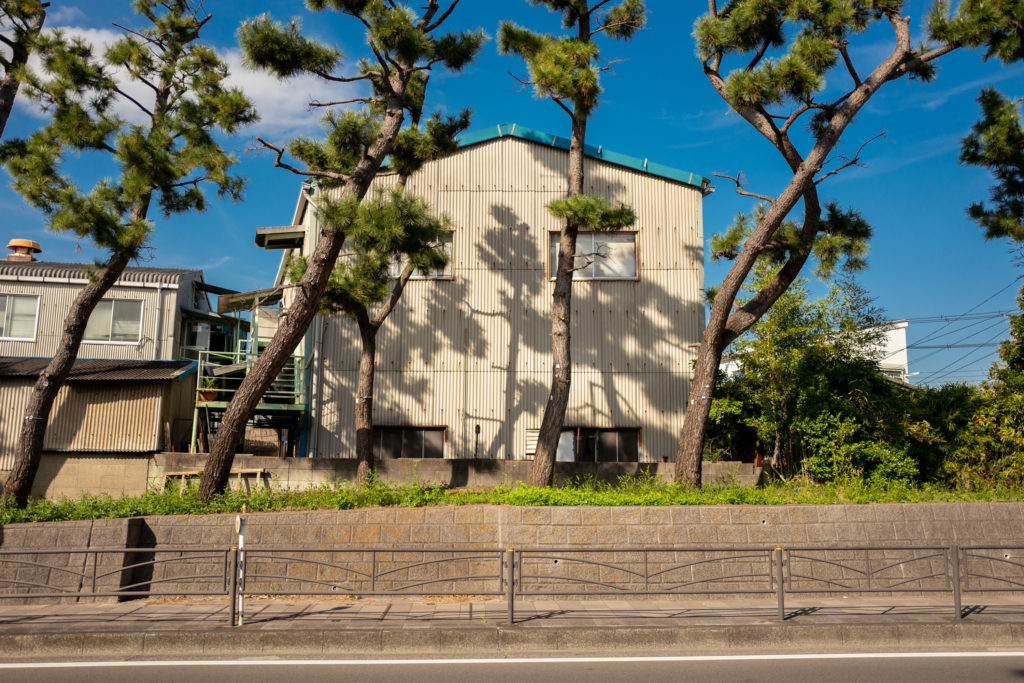
Finally, I arrive to Oiso, the strange jewel of the coast, the antipode to most of what I just rode through. Why is Oiso so wonderful? It’s difficult to say. I’ve visited only twice, the first time in the summer of 2020. The town emanates an immediate sense of refinement. Perhaps it’s the sudden abundance of trees, or the simple stateliness of the homes, the lack of industrial smokestacks. Perhaps it’s tiny Mount Sengen, rising up behind town, giving it a richness the flats leading up to it lack. There’s a sense of power to Oiso that outstrips its smallness. Spend time here and you begin to understand why this was where power itself once congregated. The station is but a tiny blip of a building, but it bustles and you feel a pulsing of life all around.
It’s early afternoon now and the day has been unexpectedly warm and I am starving and ready for some coffee so I head to Sara, a sixty-five year old wooden home converted into a cafe. The name comes not from some mysterious woman named Sara, but rather from the word sarari, which can be translated as light, plain, simplicity. Which aptly describes the shop. Sara is empty, but mercifully open. I order a special waffle with ice cream and cold brew iced coffee. We are in the season of unlimited golden hours, where the days are short but the sun glances from morning to night. The shop is cast in gold, and in one of the patches of light, Rucola — the shop’s fourteen year old Shiba dog — sleeps. Or — I think for a moment — has perhaps died. But, no, not dead. Just sleeping. Rucola is beloved by all, though I am not sure Rucola understands what is happening to her. She hobbles around, lies down, hobbles some more. Isn’t too keen on being touched but brings with her a sense of goofy joy that, along with the excellent iced coffee and waffles, makes Sara a lovely spot to spend an afternoon.
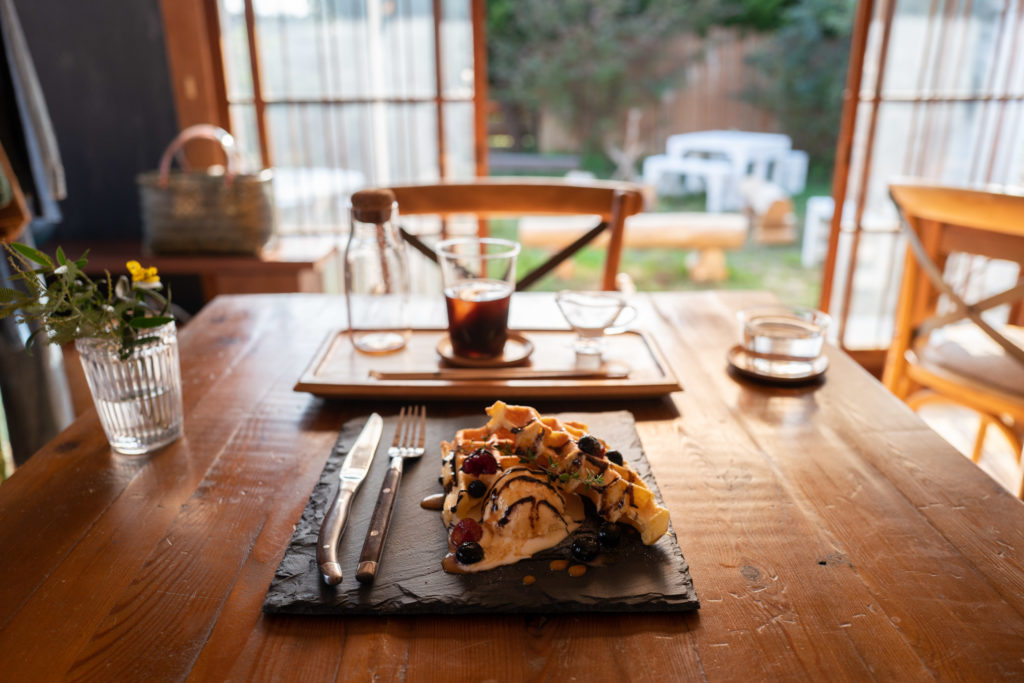
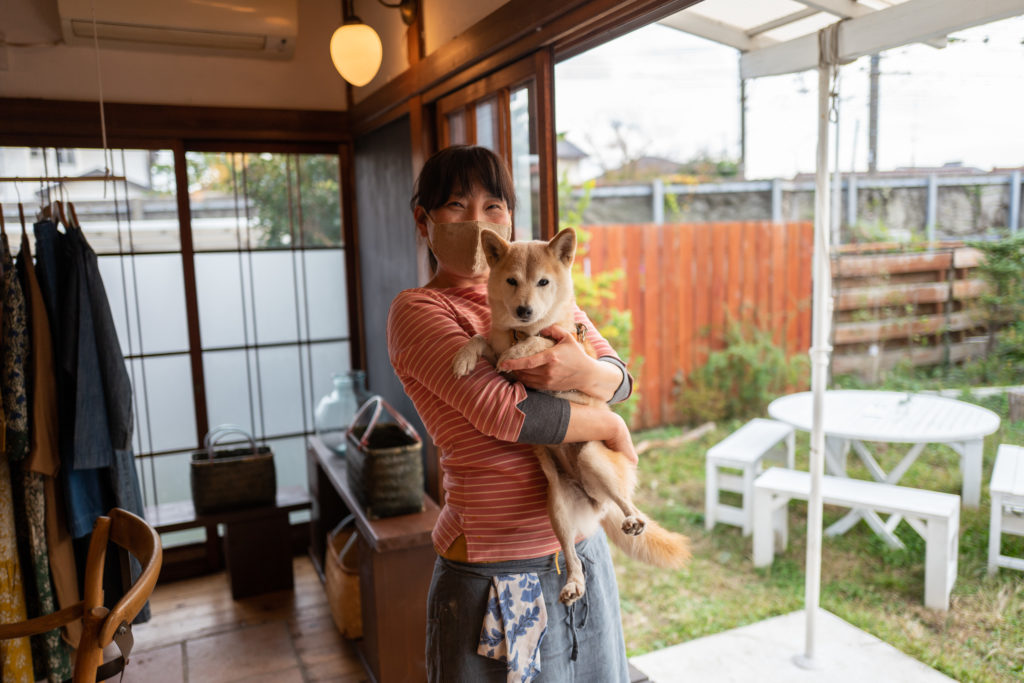
Renewed, I head back out into the world. Oiso has one of the few remaining original matsunamiki strips of the Tokaido. I bike over and enjoy the shade. Nearby the strip is a street with Keisho (makeup) Slope and Keisho Well. The street reminds me of a middle class suburb in Connecticut. If I squint, I’m almost home.
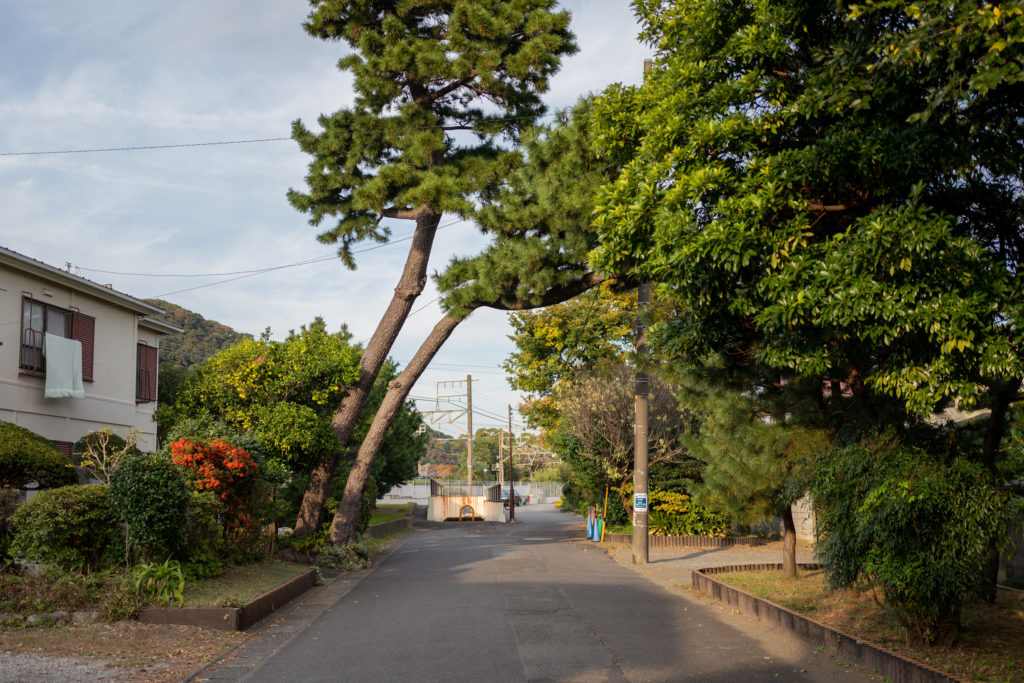
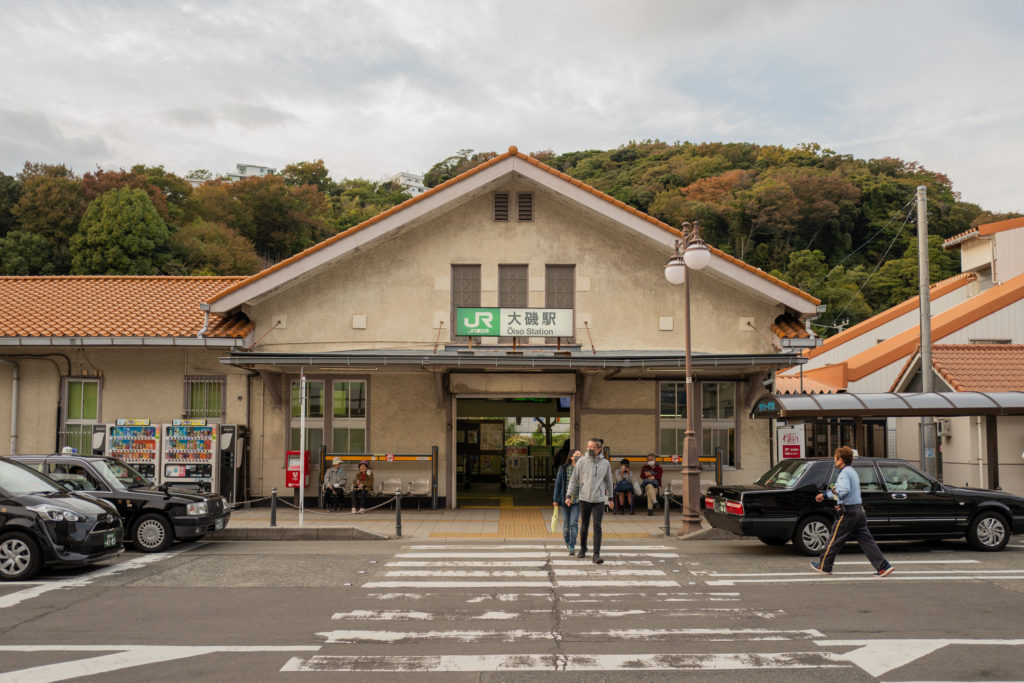
Follow the tracks past the station and you’ll find poet Shimazaki Tozon’s former residence. A one story hiraya-style Japanese home, charming and elegant.
Further down the tracks: farmland, and the sprawling Oiso Joyama Park. Across the street is former Prime Minister Shigeru Yoshida’s old residence. The residence is a pleasant Taisho Era mix of western and eastern architecture styles, but is also almost grossly opulent. Certainly in comparison to Tozon’s monkish home. Despite the unease the home projects around excessive cash, garishness, and politics, the second floor offers panoramic views out along the western sprawl of Ōiso, the Pacific Ocean and the Izu Peninsula off in the far distance.
You could spend an entire day touring the old homes of politicians in Oiso. But we are here for bread, and it is almost 4 p.m., the time when Lee’s Bread closes. I bike towards the station and down the unmarked side street to Lee’s. Open!
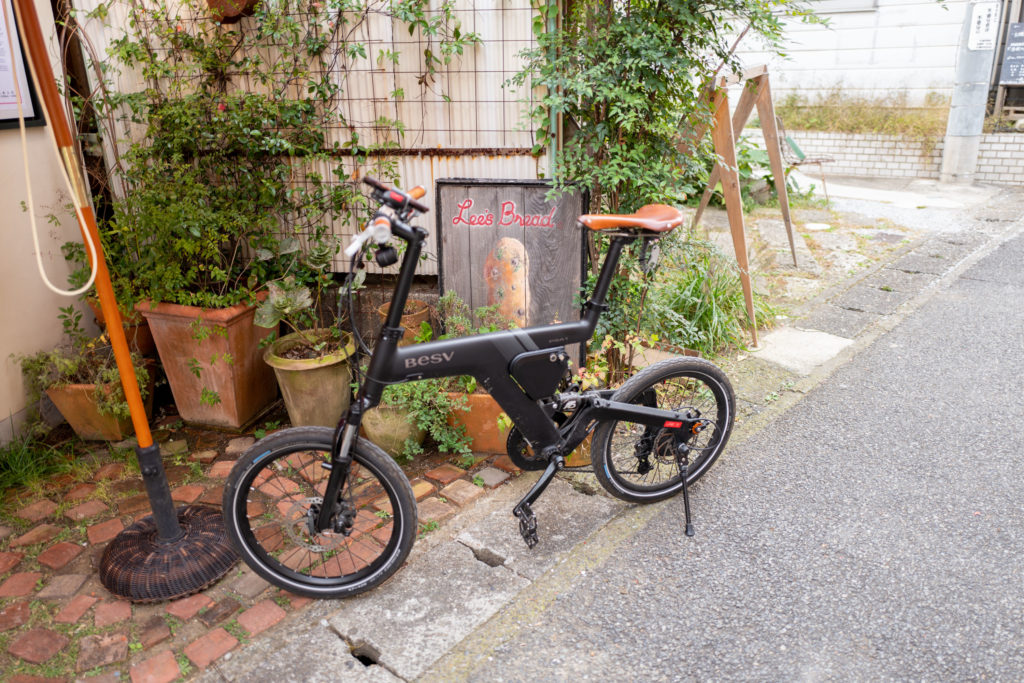
I tell them I’m here from Papersky and the woman behind the counter gives me a suspicious look. I ask for Lee; I spot her working in the back. Lee comes out, masked up, with hesitation. But I’ve bought her bread before, and we’ve chatted at length before, and after a few key words — ah! — she remembers me — the Kamakura guy! — and she becomes as loquacious and warm as you’d imagine someone growing up in South Carolina to be. Twenty-three years of bread making here in Japan. It begins five days a week at 1:30am. Five days is enough, she says. Her husband opens the kitchen and Lee arrives a few hours later to see her richly patina’d sourdough loafs through to completion, putting in a solid twelve hours of work each day. I arrived at 3:45 p.m. and Lee and I chat outside as a stream of customers come in to snatch up whatever remains of the day’s bread.
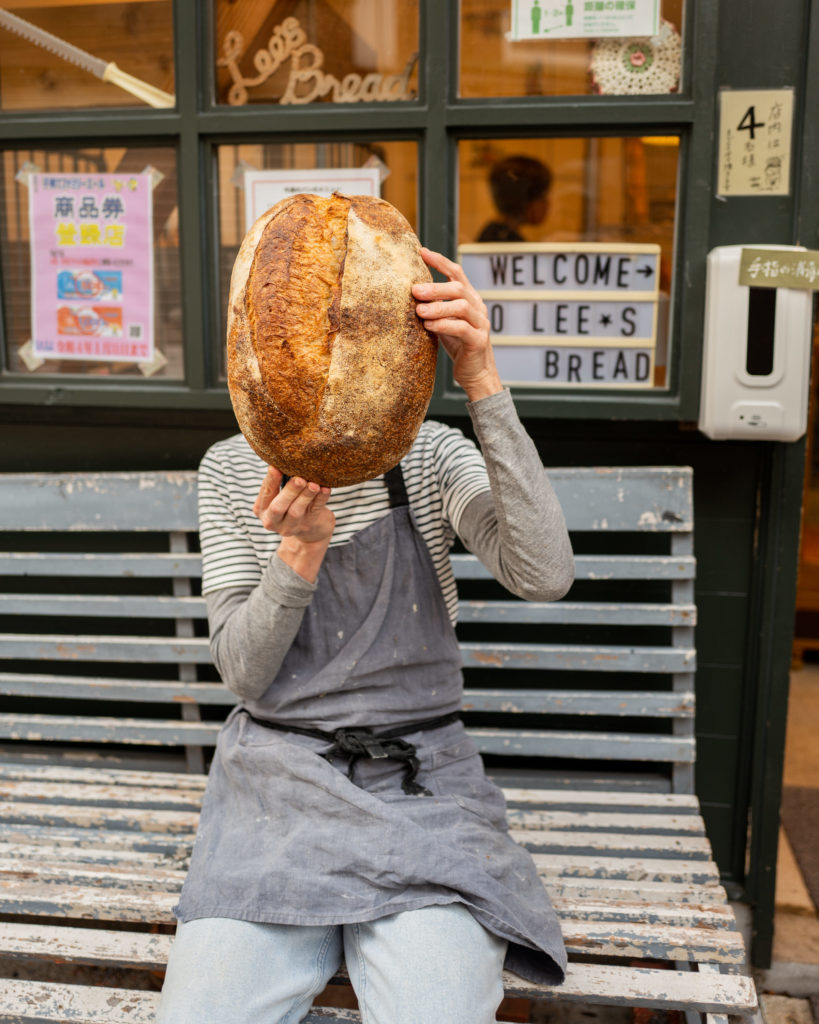
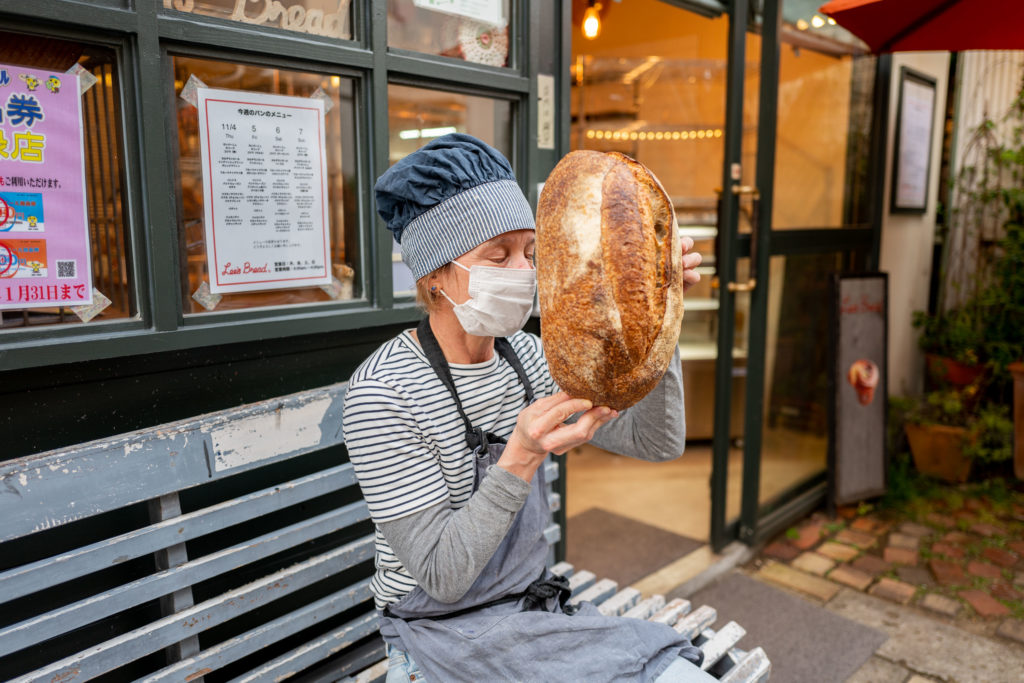
I buy a quarter loaf. The bread is divine. It’s one of the best sourdoughs I’ve ever had, never mind just in Japan. Anywhere. Reminds me of Tartine Bakery in San Francisco. You could play Lee’s loafs like bongos. Tapping the crust lets out a thick bass note of carbohydrates and love. Inside, the off-white open crumb feels impossibly light and silken in hand. I am tempted to hollow out fistfuls and fill my cheeks with its sour holiness, suckling it like chewing tobacco. But, no, I eat it like a normal human. I am sated and feel joy and I am spent and so, in that very moment, decide to spend the night in Oiso.
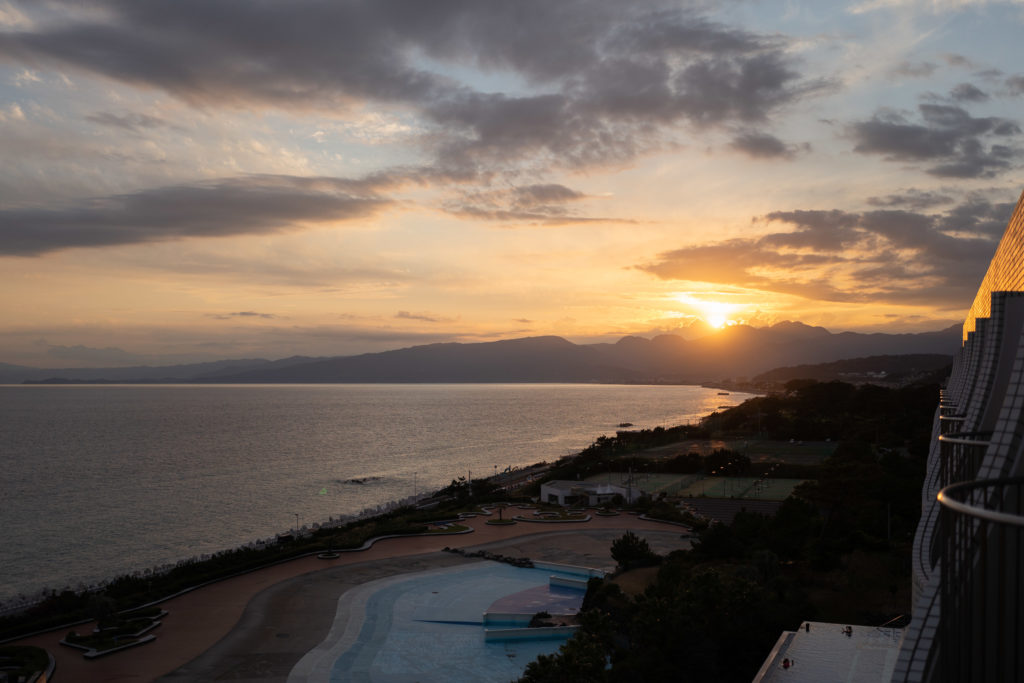
The next morning I am served the worst cup of coffee I have ever had in Japan. I will not tell you where I had it, but I had it, and, reader, it was rough. Not that I drank it all. Two sips was enough confirmation. I didn’t have the heart to tell the shop their coffee was bad because if you’re already serving something that undrinkable, all hope is lost. No sense can be imparted. The small trauma caused by this hot mug of doomed goo created a rift in the otherwise string of delights that was this ride. So I made it a point to atone for the trauma of the bad coffee with excellent coffee later on.
I rode back along the coast, straight east towards Kamakura. I had a tangy fish burger at Yanagishima Kitchen. I rode between thick strands of pines on the walkway beside the coastal highway. Pines to the right, breaking the road from the ocean, and pines to the left, breaking the road from the neighborhoods just beyond. I was floating through a tunnel of pines, summer light glinting between their branches, thinking of one thing and one thing only: Good coffee.
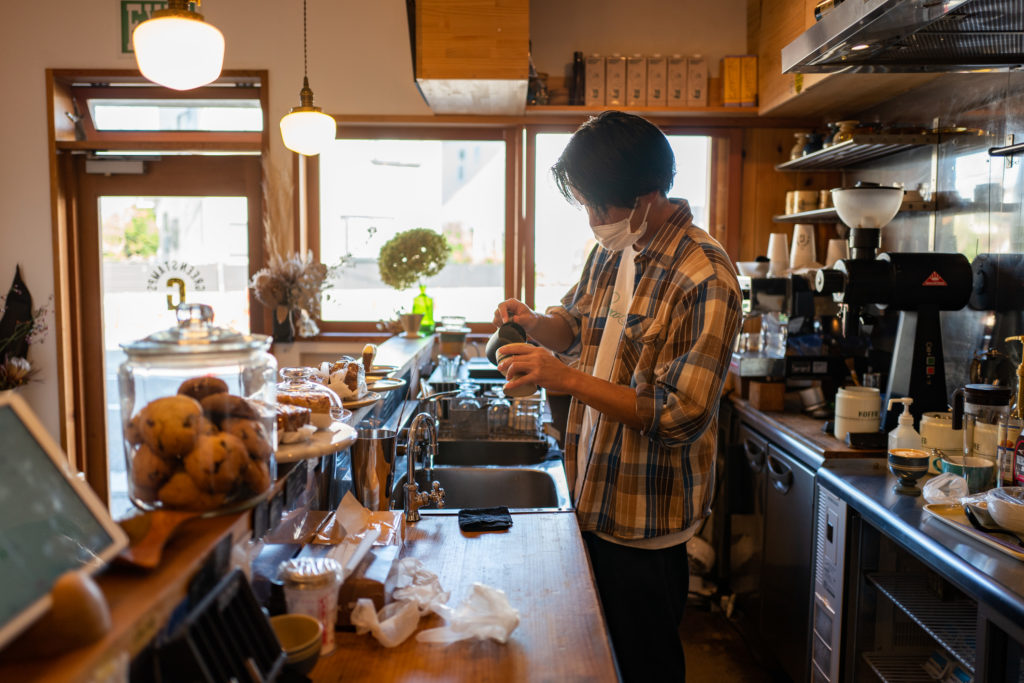
GREEN STAMPS COFFEE was hopping, was like walking into a friend’s living room in the middle of a fashion show. Two older women held a rat-sized dog in the corner. Four women in their 20s riffled through the used clothes against one wall, ducking into the bathroom and trying things on with a surprising rapidity, emerging to cheers from the crowd. I was there for the coffee, as a palate cleanse against that terrible morning cup. Green Stamps is run by Yamada Ippo, a Shōnan coffee impresario, who runs another cafe in Zushi called POOLSIDE COFFEE. Green Stamps is his Chigasaki-area joint, opened in March 2018, and it seems to be a gathering point for the locals. It’s small, abutting a pizzeria, and you can order a delicious Margherita pie for lunch that’s delivered through a tiny, shared window in the wall. Their coffee is fabulous, roasted by the superb Leaves Roastery in east Tokyo, with all the tasting notes you’d expect of well-roasted beans. All drinks hit their mark. I have an oat milk latte as I read Angels by Denis Johnson and feel a calm pervade the body, reversing past traumas of lesser coffees.
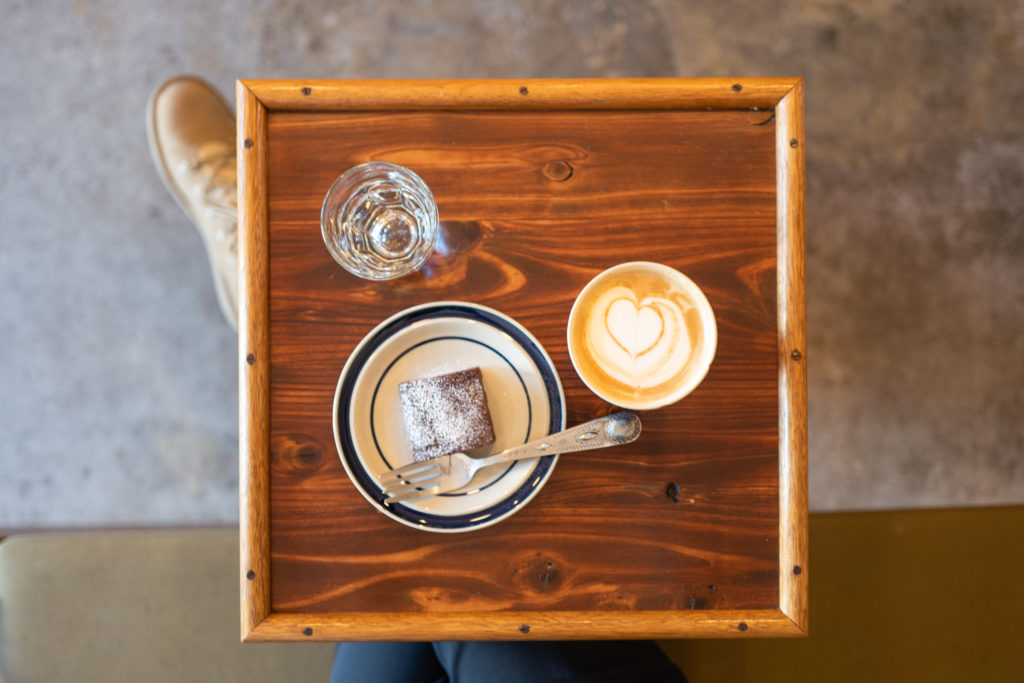
Of note: Nearby sits 27 Coffee Roasters, one of the best roasters in Japan. Just a ten minute detour north, they have exceptional eyes for rare specialty coffees. Perhaps the best selection I’ve seen in a single shop. For the past few weeks my life has been powered by their so-called geisha blend produced from beans raised by a farmer named Miguel Alvarado from Honduras. It never ceases to delight first thing in the morning.
GREEN STAMPS COFFEE is a balm for the soul. Yamada sits in the back porch and we chat about books and coffee life. The sun is setting. I should get going. After a gluten free chocolate brownie, I bid farewell to the rat dog (my heart already aching for Rucola) and hop on my bike.
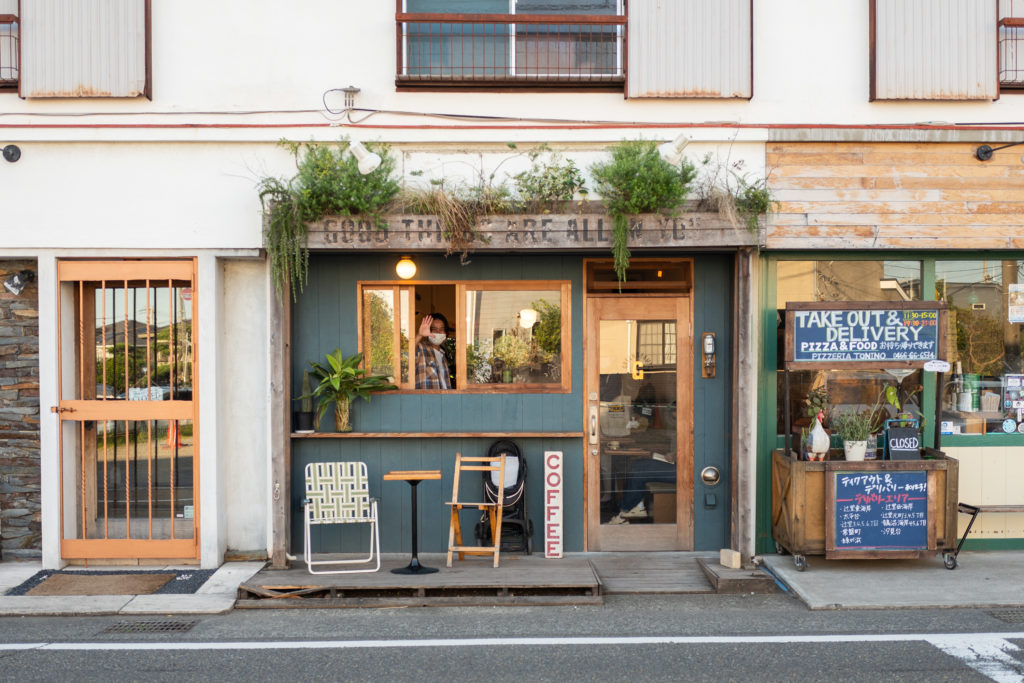
I pass a sunkissed Enoshima, with the turnoff back up to Fujisawa. I head up a steep slope into the highlands behind Kamakura Koko-mae Station (made famous by the Slam Dunk manga series), and watch the sun set from above. Small schooners slide atop the ocean in the distance. Today is September warm, and Fuji is hidden amongst the haze. I think back on the ride: This loop is truly bizarre — the monorail, the farmlands, the new highway, the subruban sprawl and pachinko strips of the Tokaido, the elegance of Oiso, and the costal ride back. It feels like a microcosm of all of Japan. I still have a few slices of Lee’s bread in my pack. Toasted with a bit of Hokkaido butter, and some sprinkled sea salt; I can’t imagine anything better. Inspired, with the last of the day’s light, I hop on my bike and finish the ride home.
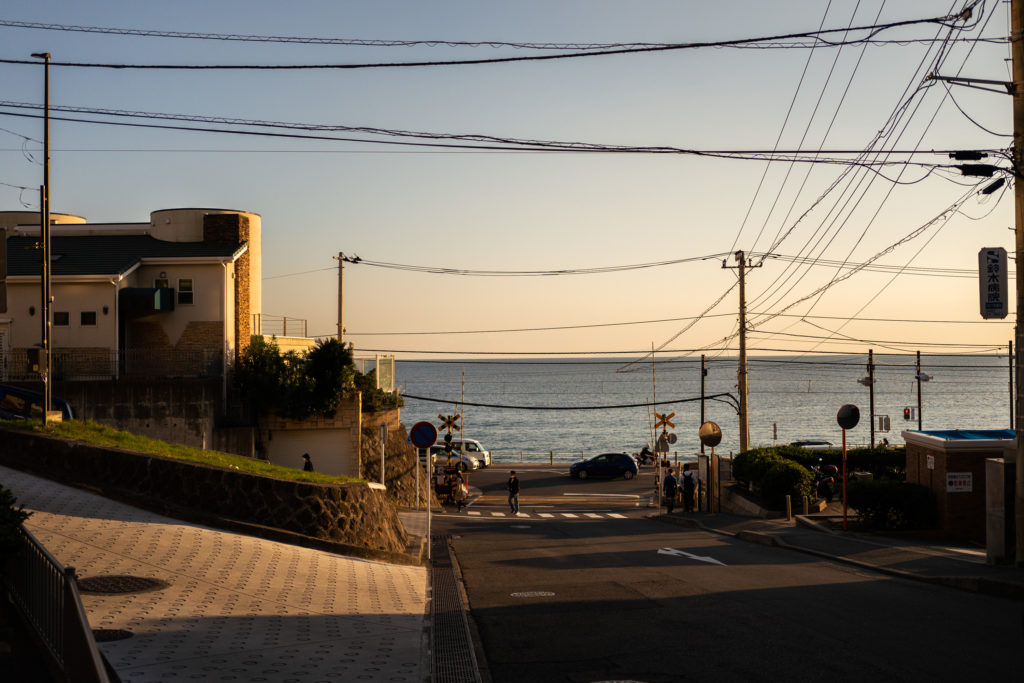
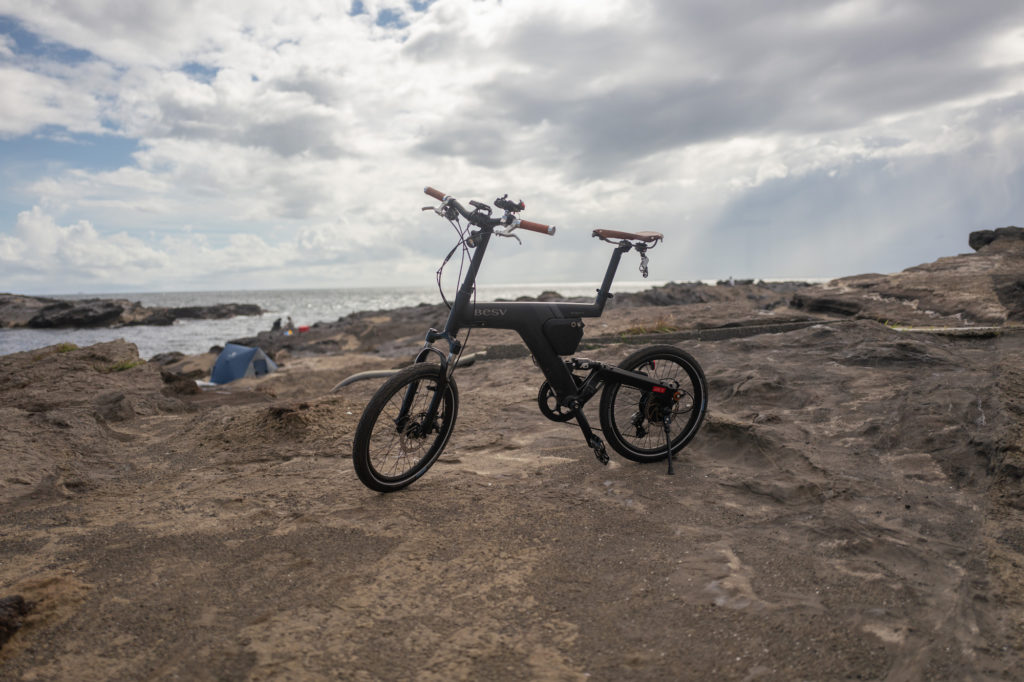
A note about the bike:
I rented a BESV PSA1 e-bike in Kyoto in September 2020 for a week and was immediately smitten. I bought my own in April (matte black, limited edition, of course). I’ve since ridden it over a thousand kilometers. It’s one of the most joy-inducing things I’ve ever owned — there’s much to love about this machine. The BESV became the impetus for this column, and prompted us to reach out to the president of BESV, who happens to have an office just down the road from Papersky. They were excited to collaborate. So while BESV is sponsoring this column, no freebees were handed out, no loaner bikes were shipped to my home in Kamakura, and the e-bike love you see here is as pure and innocent as you can imagine.












